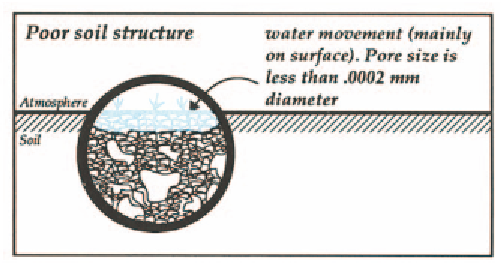Geoscience Reference
In-Depth Information
Structural stability in soil is greatly enhanced by high levels of organic matter,
which can be achieved by minimum, or no till cropping, appropriate rotations and
use of perennial pastures. Management practices that encourage soil biological
processes lead to good soil structure.
Organic matter adds plant nutrients and structure to a soil, and provides
food for plants and soil organisms.
Organic matter
Organic matter gives soil its dark colour and provides many plant nutrients,
especially nitrogen and carbon, and significant quantities of many other nutrients.
Organic matter also provides food for soil macro- and micro-organisms, which in
turn decompose it and release the nutrients in forms that are available to plants.
The soil organisms themselves decompose after they die, releasing nutrients to
plants in a slow release form. Organic matter is a major contributor to forming and
maintaining a stable, well-structured soil. A highly fertile soil will have high levels
of organic matter and a reduced need for supplementary chemical fertilisers. A
further benefit of organic matter in soil is to increase both the water infiltration rate
and water holding capacity of the soil. This means that there is less runoff during a
rainfall event, so more water is available in the soil for plants to use (Figure 25).
Figure 24
Well-structured soil (top) and poorly structured soil (bottom). (
Soil Sense
M-03)



Search WWH ::

Custom Search